Are the leaves of your Spider Plant (Chlorophytum comosum) beginning to curl? Finding the root cause of the problem can be pinpointed to several different factors.
Some of the common issues that may cause your curly Spider Plant leaves are improper watering schedule, soil pH, pests, rotten roots, harsh sunlight, and growing your Spider Plant in a pot without drainage holes.
- Related article: Are Spider Plants Indoor or Outdoor Plants
Let’s take a further look at the aforementioned causes and try to help you solve the mystery of your curly Spider Plant leaves!
1. Underwatering
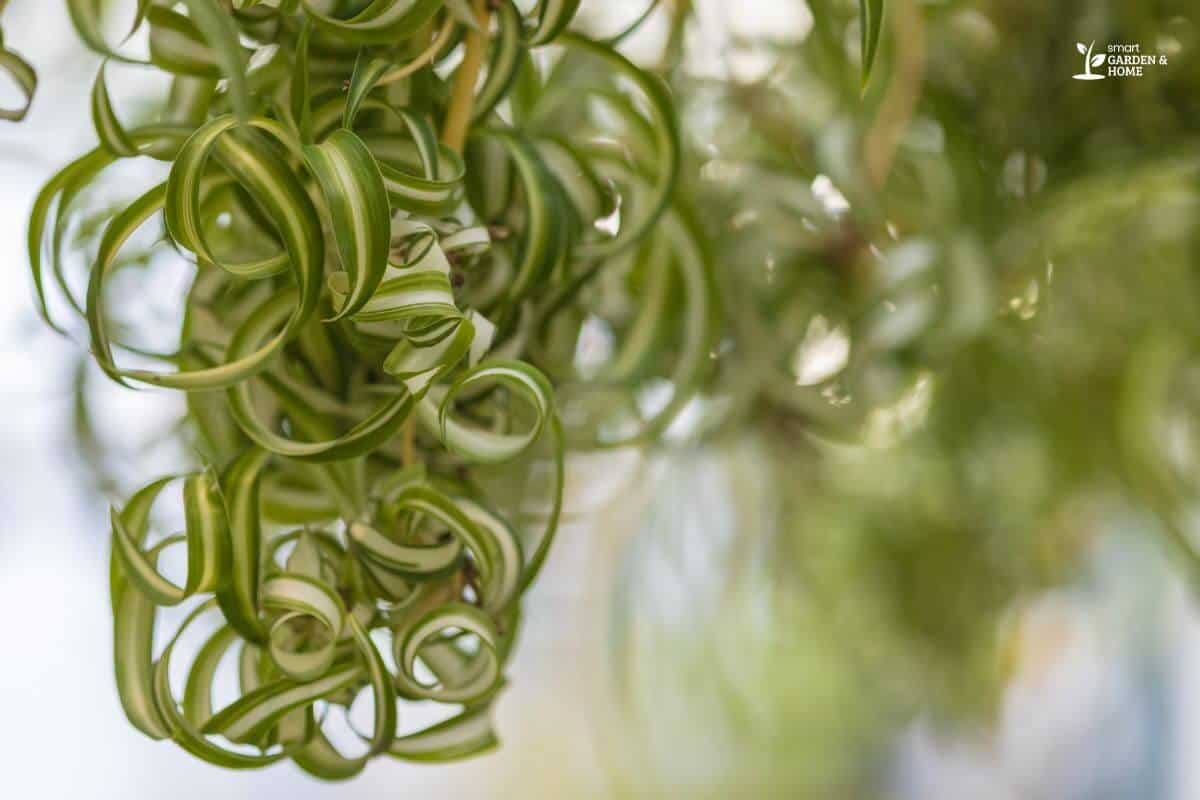
First, curled leaves can indicate underwatered Spider Plants.
To ensure proper hydration, these plants require watering one to two times each week. To determine soil moisture levels, simply insert your finger below the surface of the soil.
To obtain precise measurements of the moisture levels in your soil, utilizing a moisture meter stick is a reliable option.
If you have forgotten to water your plants in the last few days, insufficient water is the most probable cause of your Spider Plant’s leaves curling.
If you notice that the soil surrounding your Spider Plant is dry and cracking, you will need to water it immediately with rain or bottled water.
When watering your Spider Plant, ensure that the soil has a good soaking and that water drains out from the drainage holes at the bottom of your plant pot.
To ensure that your plants do not suffer from a lack of water, it is recommended to water them regularly. One way to tell if they need water is by checking if the top layer of soil is dry.
If the soil dries out rapidly, it may be necessary to replace the potting soil.
Soil that has excellent drainage will naturally lack water retention. Add some vermiculite to your potting soil as it will increase your soil’s water retention.
2. Overwatering
You may have the opposite problem—just like underwatering can cause the leaves of your Spider Plant to curl, excess water in your plants will be just as detrimental.
Determining if excess watering is the actual problem can be done by checking the moisture levels in your soil.
The most effective way to determine soil moisture levels is by using a moisture measuring stick.
Wait for a few days after watering your plants before taking a moisture reading of your soil. If your soil has a wet reading, you might have poor drainage and may have overwatered your plants.
Various methods exist for addressing overwatering in plants, although they are not always straightforward and may require more than simply reducing water intake.
Overwatering of plants can occur due to various factors. However, clumpy soil with inadequate drainage is a prevalent reason for soggy soil.
The pot’s drainage system may have blockages or insufficient holes for water to properly drain.
If your Spider Plant is overwatered, transplanting it into another container with soil that has better drainage will solve your problem.
3. Soil pH
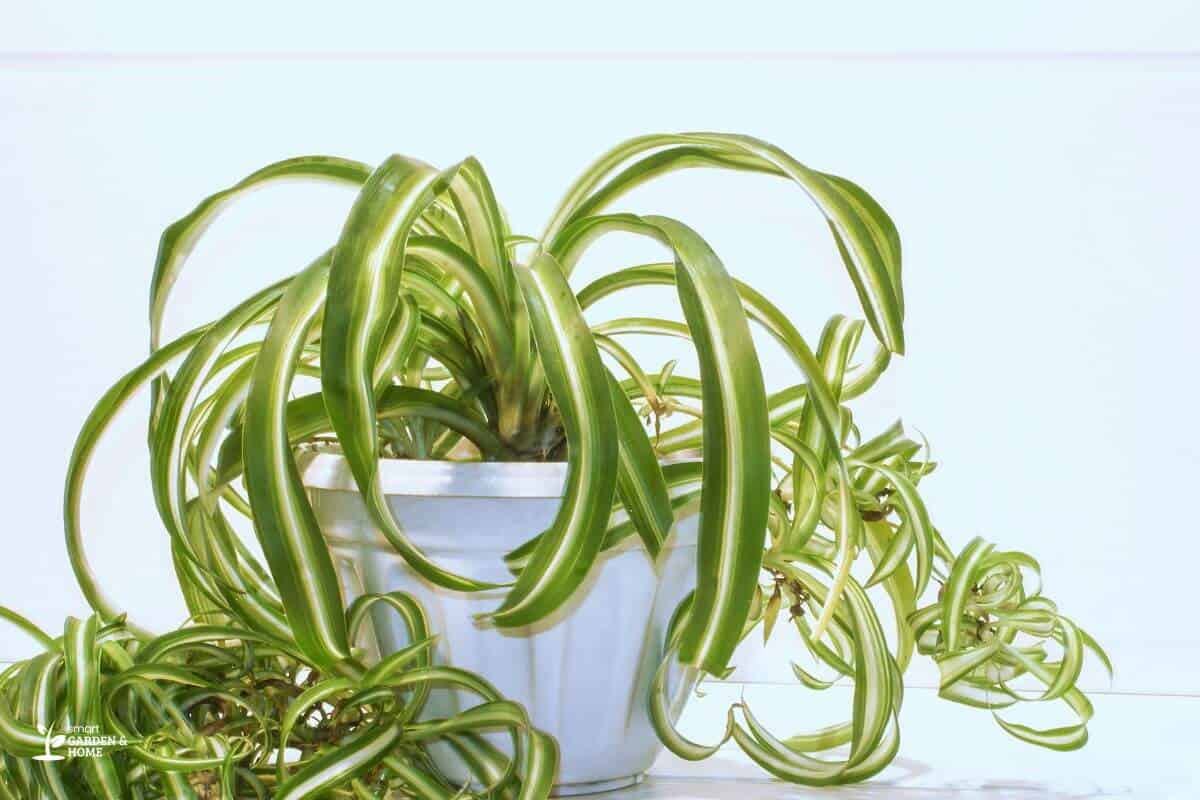
The pH levels of soil and water have a significant impact on the ability of plants to absorb nutrients.
The leaves of Spider Plants will turn yellow and curl if they are planted in soil with an incorrect pH balance.
Spider Plants prefer slightly acidic soil, with a pH level ranging between 6.0 to 6.5.
To measure the pH levels in soil, a soil pH meter tool can be used. Similarly, the pH levels in water can be measured using a pH testing kit.
Proper hydration with pH-balanced water can prevent the curling of Spider Plant leaves.
Before watering your Spider Plants, test the water with a pH tester and adjust it accordingly.
4. Pests
Spider Plants have juicy and succulent leaves that attract the attention of some houseplant pests such as Spider Mites, Aphids, Thrips, and Mealybugs.
These sap-sucking insects will make a home on the undersides of your plant leaves, feasting on the sap and causing your leaves to curl.
Some insects will leave behind a sticky residue, whilst others can be spotted on your leaves.
If there are tiny red, brown, black, or rusty orange spots on your Spider Plant’s leaves, it’s safe to assume that there is a pest infestation.
Spider Plant pests can be controlled using a wide range of different ways.
One of the most effective methods of preventing Spider Mites is by placing sticky traps at the base of your Spider Plants.
Sticky traps will trap any Flying Gnat or insect that could possibly pose a problem.
Spraying organic pesticides such as Neem oil or Spinosad, or using insecticidal soap, on the leaves of your Spider Plants will exterminate any insect population.
If you aren’t a fan of spraying pesticides, you can always introduce natural predators into your garden.
Ladybugs and wasps are natural predators of common damaging pests, and having a few predators lurking amongst your plants will quickly resolve any pest infestation.
5. Root Rot
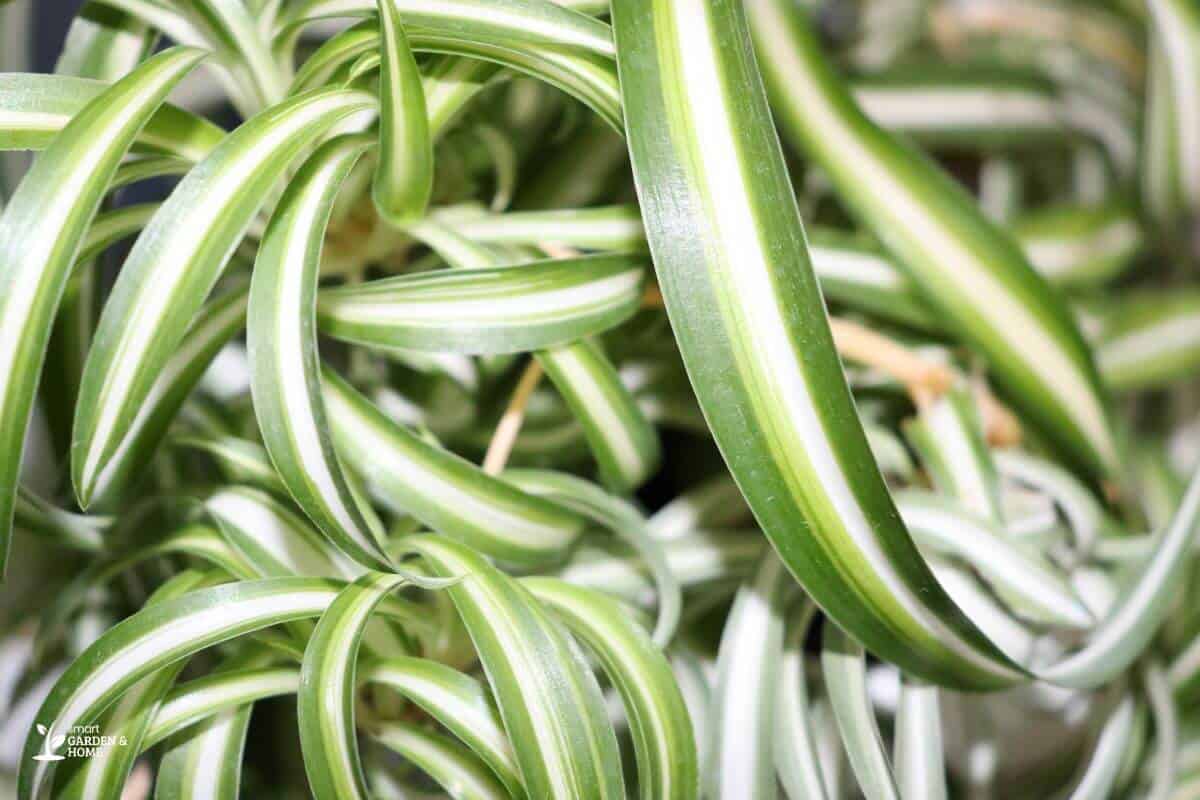
Spider Plants are hardy and excellent plants and there aren’t many fungal diseases that affect them.
But root rot is one of the few fungal diseases that will attack the roots of a Spider Plant and cause its leaves to curl.
Root rot is caused by the overwatering of a plant or by using soil that has poor drainage.
The fungal disease spreads over the plant roots and starves the plant of nutrients and oxygen, causing nutrient deficiencies.
The presence of brown spots on the leaves and a foul odor emanating from the soil may suggest that the plant has contracted root rot.
Transplanting a plant into new soil is necessary if it has been infected with root rot.
The infected roots of your Spider Plant must be trimmed off using a pair of clean pruning shears and removed from the remaining roots.
You can prevent root rot from occurring by using fresh soil with good drainage, and ensuring that there are sufficient holes at the base of your plant pot for excess water to drain.
6. Direct Sunlight
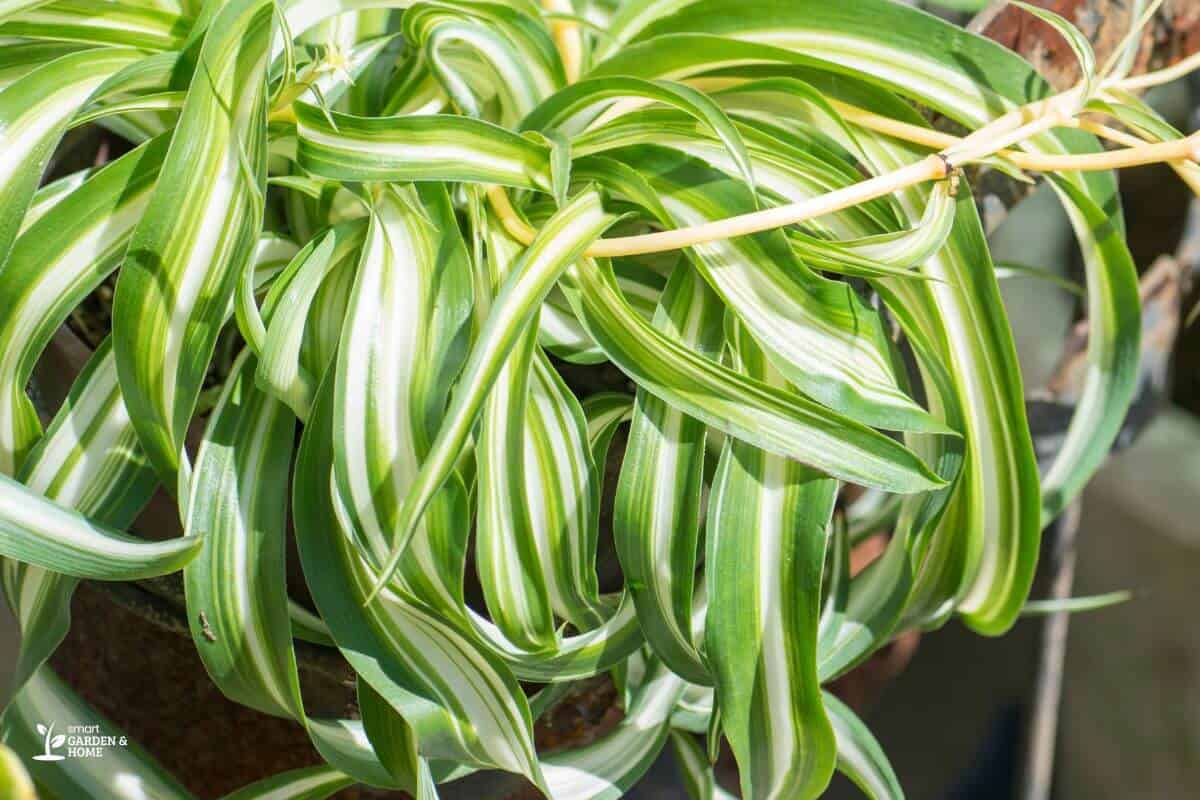
Most indoor plants are sensitive to excessive light or sun exposure and only need many hours a day of bright, indirect sunlight to grow. It’s the same with Spider Plants.
Direct light levels will harm the sensitive leaves of your Spider Plant and will cause them to curl if they are exposed to the sun’s harsh light and UV rays.
Spider Plants cannot be left in direct sunlight, although some morning sunlight will not harm their leaves.
The bright light from the sun will quickly dry out the moisture in a Spider Plant leaf and cause the tip of the leaf to curl and burn.
Find a well-lit area in your household that receives between 6-8 hours of indirect light per day to make sure that your plant does not get insufficient light.
Keep your Spider Plants away from window sills unless there is some material netting or plastic mesh that will block the sun from burning the leaves of your plant.
7. Chemicals in Water
Tap water can sometimes result in Spider Plant having curly leaves.
Tap water can contain excess water minerals or chlorine levels, which can build up in the soil over time and cause various issues, including leaf curling.
If you suspect that tap water is the cause of your curling leaves, consider switching to distilled, filtered, or purified water to avoid this problem.
Alternatively, you can leave tap water out overnight to allow the chlorine to evaporate before using it to water your Spider Plant.
8. Inadequate Humidity Levels
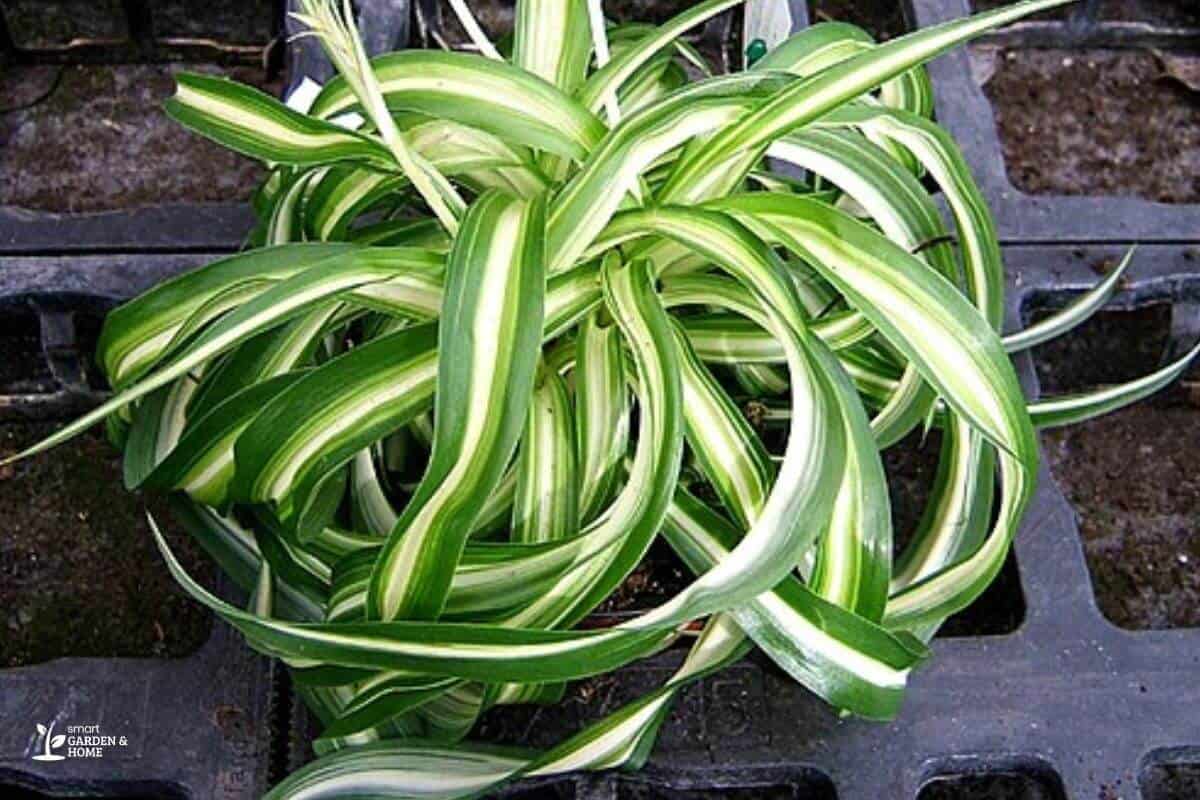
Low humidity levels can cause curly leaves on Spider Plant. Spider Plants are tropical plants and prefer a humid environment.
When the air is dry, the leaves can become wilted and become curly leaves as a way of conserving moisture.
A lack of humidity can also cause brown tips on the leaves or even lead to the plant’s death if left untreated.
To prevent curling and promote healthy growth, it’s important to maintain a humid environment around your Spider Plant.
You can achieve this by regularly misting the leaves with water or placing a humidifier nearby.
Grouping your Spider Plant with other plants or placing it on a tray filled with pebbles and water can also help to increase humidity levels around the plant.
Final Thoughts on Curling Spider Plant Leaves
If you notice your Spider Plant leaves curling, don’t panic as it is a common problem that can easily be fixed.
By identifying and addressing the root cause of the issue, such as overwatering, lack of humidity, or exposure to direct sunlight, you can keep a thriving and healthy plant!
To ensure the health of your beloved plant, it is recommended to keep it in slightly acidic soil that drains well, regularly mist its leaves, and place it in a location with bright, indirect sunlight.
By following these steps and maintaining proper care for your Spider Plant, its attractive and flowing foliage can be appreciated for many years.
A Spider Plant is a suitable popular houseplant option for those seeking a low-maintenance, visually appealing, air-purifying addition to their living space!
Check out these interesting articles to know more facts about Spider Plants:
- Reasons for Leggy Spider Plants
- Overwatered Spider Plant
- Spider Plant Leaves Turning Pale Green
- Spider Plant Side Effects
- Spider Plant Brown Tips on Leaves
Sources:

